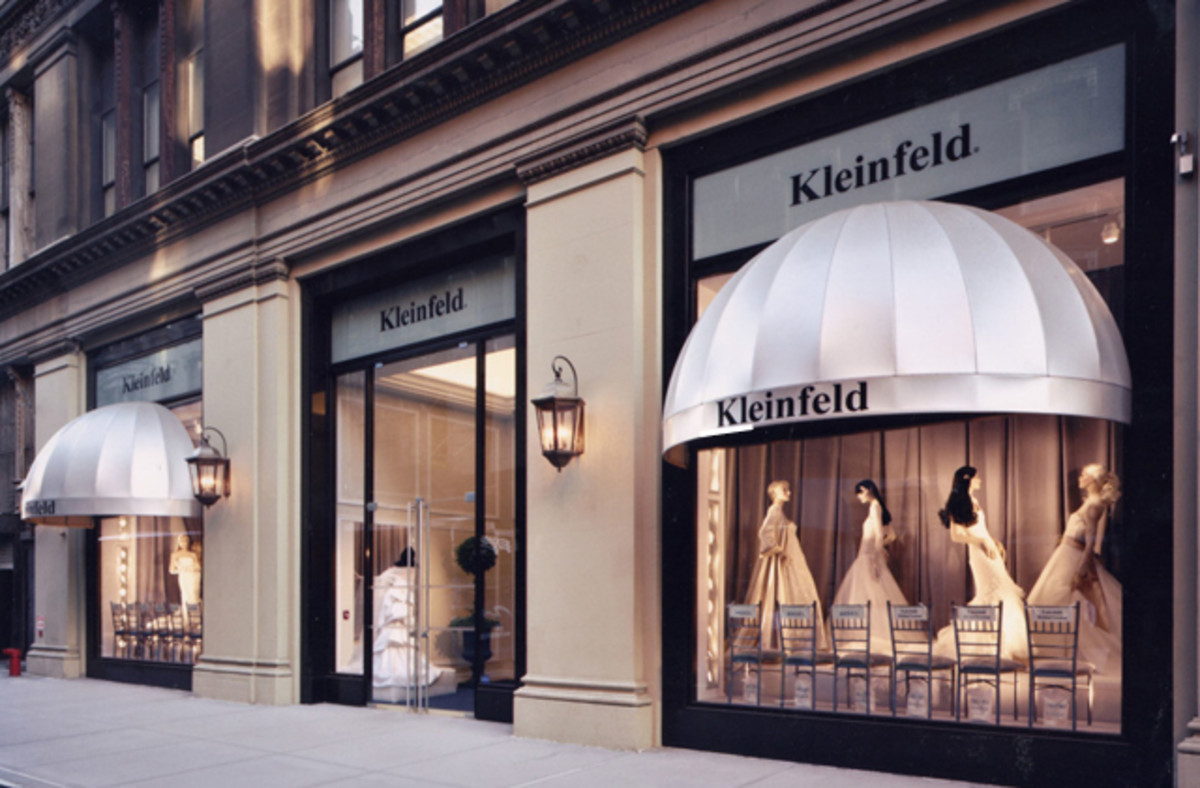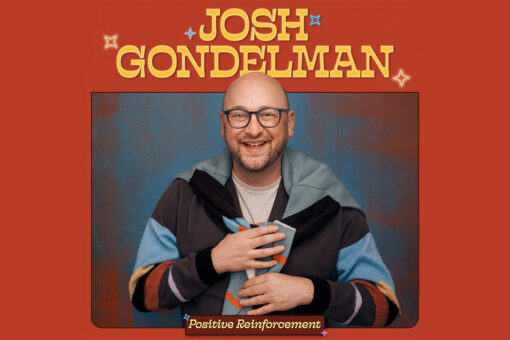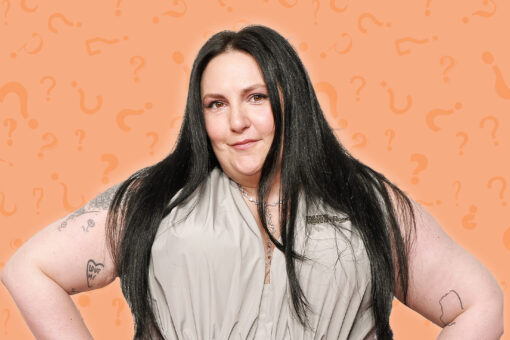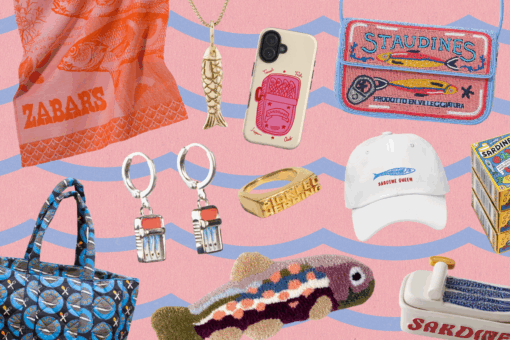There was too much oxygen in the room. My five friends and I felt it as we brushed past fake cherry blossoms and urns filled with prickly “moss,” crowds of women with caked-on makeup sitting in clumps around the windowless lobby. Each group fidgeted expectantly, peering over their shoulders to see into the room behind an expansive front desk. Daughters sat with their mothers and grandmothers, friends hovered around each other on circular couches, and a few men milled about aimlessly, looking lost but attempting to assert purpose.
We were all waiting to look at wedding dresses in the lobby of Kleinfeld Bridal.
You know exactly what I’m talking about if you’ve ever seen the reality TV show Say Yes to the Dress on TLC. In it, hopeful, often difficult-to-please women (it’s reality TV) come to Kleinfeld to find their dream wedding dresses. Every woman brings an entourage of her family, friends, and sometimes fiancé, each of who have distinct ideas about what the bride-to-be’s dress should look like, usually with little consideration for the future bride’s desires (again, it’s reality TV). I’ve been watching the show for years with my mother, who is a big fan, and have always found the participants’ behavior — from pushy salespeople to merciless friends-of-the-bride — to be moderately terrifying.
So naturally, after one of my best friends got engaged several months ago, we went out for drinks one night and thought it would be funny if we made a Kleinfeld appointment.
Turns out, it was funny. And a little intense. Future brides paraded through a maze of other people’s family and friends to stand on one of Kleinfeld’s many pedestals and pose for the mirror. Every now and then, you’d hear a smattering of applause because someone had indeed said “yes” to the dress. By the end of our time in this overly oxygenated environment, my friends and I were clapping along with them.
Overall, the five of us watched my friend try on five dresses over the course of maybe an hour, all the while running our hands over tulle, beads, and material that felt like picnic blankets. The room was lined with dresses, each more outlandish than the next. One screamed “confused wizard,” another suggested, “Yes, I am a very large napkin, thank you for asking,” while a handful of others just looked like what a 5-year-old might imagine a princess would wear (in other words, “Disney princess cosplay”). Many felt like they weighed at least 40 pounds.
And let’s not forget the headwear. The walls that didn’t serve as open closets held white shelves carrying sparkly tiaras and beaded flower crowns. The cheapest cost well over $200. Neither that nor the threat of lice stopped my friends and I from trying on all of them. If someone wanted to buy a cheap dress at Kleinfeld and headpiece, they’d be in for at least a grand. And from what I saw of Kleinfeld’s “cheap” options (and sales tactics), that seemed an unlikely outcome.
All told, the wedding industry is worth somewhere between $50 and $120 billion, depending on whether you asked CNN in 2013 or a brand-focused contributor at Forbes last summer. The Wedding Report put the industry’s worth over $59 billion in 2016, and about $3 billion of that total is dedicated to styling the bride, writes Racked. Even if millennials are supposedly driving down the average value of wedding dresses, everyone I’ve personally seen tie the knot has done so in an elaborate white dress. And they put care into finding it.
“In total I probably tried on 25 dresses or so,” my friend Erin*, who’s now married, told me. She’d gone to three stores, two of them in one day (“Looking back, I would’ve tried to spread appointments out more.”), and encountered aggressive salespeople along the way. One tried to sell Erin a dress twice her budget, threatening to upcharge her for bust adjustments. “Completely insane for a special order dress that would be tailored for my body!” Erin pointed out.
The ordeal didn’t end with the purchase of Erin’s dream dress (which she adored and looked stunning in). “If anything, the stressful part… came after,” she said. “I think I bought and returned something like 10 or 12 pairs of shoes until I found ones that worked (medium chunky heel, ankle strap, fun color). I’m now a Zappos VIP from all of the ordering.”
Even those poised to avoid the corporate dress industry end up in a department store or two… or three. My friend Hannah, whose mother designs beautiful, custom dresses, is currently collaborating with her mom on her wedding gown. As part of the process, the pair ventured to three different stores, including Saks Fifth Avenue, so Hannah could try on pre-made options to see what styles she liked and what turned her off. “Espionage is what we called it,” Hannah said of their department store research.
Of course, not all of us have mothers who happen to design fabulous, custom dresses. And those future brides may have to endure a stint at Kleinfeld or a similarly contrived, high-pressure sales environment to find the dress of their dreams.
Stress permeated the (abundant) air at Kleinfeld. I saw a sweating woman parade before her four, shrugging friends maybe seven times to zero claps, tugging at dress after dress that didn’t quite fit. I saw harried women chase small, screaming children through forests of taffeta. I saw Say Yes to the Dress’s most intimidating salesperson give future brides withering glances, and I saw those bride-to-be’s faces afterwards. I saw a dad cry (but I think he was happy).
Fortunately for my friend, she’d fibbed about her wedding date (it’s so far in advance she doesn’t have one) and went into the process knowing our stint at Kleinfeld was essentially a lark and buying was a not an option. Still, the salesperson working with my friend handed her a business card on the way out, making her promise to contact her when it was time to say, “Yes.” Weeks later, my friend received multiple voicemails from a photographer claiming that the salesperson had “raved” about my friend and trying to get her as a client. My friend had not given permission to share her contact information. “So like Kleinfeld is obvy a wedding factory with no morals,” she concluded to me, via text.
Leaving the ornate plastic world that is Kleinfeld, and kind of the whole bridal industry, my friends and I discussed how the bridal shop resembles a casino. We were still giddy with our own experience, having just walked away from the Kleinfeld step-and-repeat, where we’d taken pictures with props provided by the bridal shop. We talked about how Kleinfeld pumps in oxygen to keep patrons awake, how there are no windows so you can’t tell what time it is, how pretty people encourage you to spend more money, and how the scenery is totally fake but incredibly detailed to convey elaborate wealth. Like a casino, the bridal industry is over-the-top, selling a fantasy.
But also like a casino, it can be a lot of fun to hang out in.
*Name changed to prevent unwanted Google search results.



